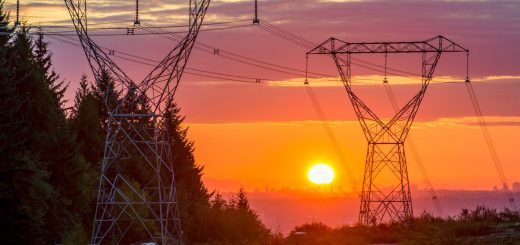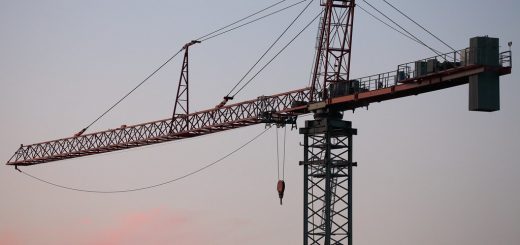CN Rail v Royal and Sun Alliance: Faulty Insurance Not Faulty Design
On Friday November 21, 2008 the Supreme Court of Canada (“SCC”) released its 4-3 judgment awarding the appellants $30 million in Canadian National Railway Co v Royal and Sun Alliance Insurance Co of Canada, [2008] 3 SCR 453. This case involved a 14-year dispute between Canadian National Railway Co. (“CNR”) and its group of property insurers including Royal and Sun Alliance Insurance Company of Canada and Axa Assurances Inc. (“Insurers”). The central question in the case was which party was liable for costs related to a damaged tunnel boring machine under an all-risk insurance policy. The Ontario Court of Appeal found in favour of the Insurers.
In my previous career as an engineer, I had the privilege of working closely with tunnel boring machine (TBM) technology. These sophisticated machines allow for large diameter pipelines or subway and rail tunnels to be bored underground with minimal disturbance to the environment or infrastructure on the surface. However, drilling through rock deep below the surface underneath buildings and rivers is fraught with risks. Possible risks include machine failure, unanticipated geological conditions, and water infiltration. Therefore it is perhaps only natural that a dispute over a TBM project would eventually end up at the SCC.
Facts
In the early 1990s CNR had a grand ambition to build the largest TBM in the world. CNR’s project was to build a custom TBM to bore a tunnel under the St. Clair River between Sarnia, Ontario and Port Huron, Michigan. This project was insured by CNR under a builders risk policy “covering all risks of direct physical loss or damage to all real and personal property of every kind and quality including but not limited to the TBM, plus any consequent economic loss occasioned by delay in the opening of the tunnel.” There was also an exclusionary provision which stated “this Policy does not insure the cost of making good faulty or improper design.”
TBMs are both powerful and sensitive. They can cut through rock uder 6,000 metric tonnes of pressure above them. The design called for a machine 9.5 metres (32 feet) in diameter and 83 meters (278 feet) long. This is roughly equivalent to two semi-trailer trucks wide and three long. Despite the size of the TBM, there are precise tolerances of 3 mm (about the width of two nickles) for components of the machine deflecting away from each other. An elaborate system of 26 seals was required to ensure the bearings are kept free of contaminants such as entry of dirt. To meet these formidable challenges, CNR hired an experienced tunnel manufacturer and formed an expert technical committee to review the design process.
Contamination trouble was discovered after completion of approximately 14 percent of the tunnel. This delayed construction for 229 days. It was determined that some seals had been worn out due to excess deflection of the cuttinghead, the portion of the TBM which is in direct contact with the rock. Modifications and cleaning to the bearings allowed the project to be completed without further contamination issues. It was puzzling to those familiar with TBMs as to why contaminants had penetrated some of the seals and not others.
Issue
The Insurers claimed the delay and associated costs fell under the exclusionary “faulty or improper design” provision of the builder’s insurance policy. At trial the insurers were nonetheless found liable for damages totaling $20,966,947 since the design had incorporated forseeable risks and was “state of the art” when finalized.
The Court of Appeal of Ontaio disagreed with the trial judge, instead fining the design of the TBM to be faulty within the meaning of the exclusion provision:
The Policy here was neither a warranty that the insured property – the TBM – would fulfill its intended purpose, nor a warranty of entrepreneurial design risk. With respect, the effect of the trial judge’s foreseeability analysis in this case is to convert the Policy into just such a warranty. For these reasons, we conclude that the faulty or improper design exclusion was made out.
Thus the central issue before the SCC was whether the design of the TBM fell within the exclusionary provision of the insurance policy.
Majority
The majority of McLachlin CJ, Binnie, LeBel and Abella JJ, set aside the decision of the Court of Appeal of Ontario, finding that “failure is not the same thing as fault or impropriety.”
Herein lies the essence of the majority decision: the challenges of this projected exceeded the “state of the art” tunneling expertise at the time of design. Thus, since both CNR and the insurers understood this would be the largest TBM project every built, even with the leading experts employed there was still a risk of design failure. That is why CNR had purchased an “all-risks” insurance policy.
The majority found the risk of differential deflection, which eventually caused the damage to the seals, was properly considered during design. With the benefit of hindsight, it is not in dispute that the design failed but the Insurers may not rely on this hindsight to establish CNR was at fault. The conclusion was that the appellants had exhausted the state of the art for risks which were forseeable at the time of design. The respondents had not proved flaws in the design process brought the loss within the exclusionary provision of the policy.
Perhaps the most significant principle articulated by the majority is that insurance policies coverage provisions should be construed broadly and exclusion clauses narrowly. The result should not be an unrealistic interpretation that would not be contemplated in the commercial atmosphere in which the insurance was contracted. The narrower interpretation of the exclusion best accords with the intentions of the parties based on a plain meaning of the words used in the policy.
Dissent
In dissent Deschamps, Charron and Rothstein JJ drew a distinction between the work of the designers and the design itself and accordingly found that “a design is faulty or improper if it does not work for the purpose for which it was intended.” They found no indication from the policy between CNR and the insurers that the “state of the art” standard was their intention rather than the “design failure” standard.
At bottom, the majority and dissenting opinions differed on their interpretation of foreseeable risks. Whereas the the latter found that forseeable risks include extreme cases if sealant failure, the former did not. Since the design failed to meet its intended purpose, the dissent agreed with the Ontario Court of Appeal that it was faulty and fell under the unambiguous interpretation of the exclusionary provision.
Conclusion
As a former engineer, I will state my bias in favour of the technical experts hired by CNR up front. It is difficult, if not impossible, to foresee design for all possible and extreme risks especially when the project is the first of its kind in the world. Furthermore, the geological conditions in a particular environment can vary greatly from other similar projects making it challenging to reasonably compare adequate precautions.
That said the majority opinion is correct in holding CNR to a “state of the art” standard for planning for foreseeable risks at the time of design. The insurers likely had their own technical experts to review this policy, and if the risks of design failure were too great their recourse is to increase premiums or refuse to insure.
The consequence of following the dissenting opinion’s “design failure” standard would be an extreme caution towards technical innovation in Canada. If CNR had known this was its potential risk at the outset, it would have likely canceled the project or performed an open excavation through the St. Clair river despite the associated cost and greater environmental damage.







Join the conversation